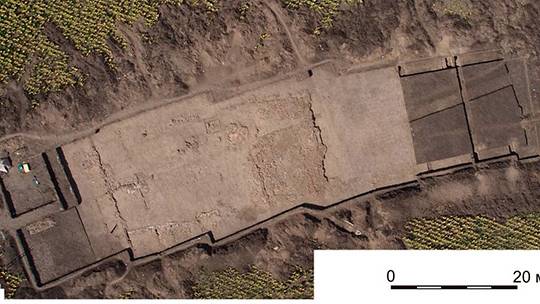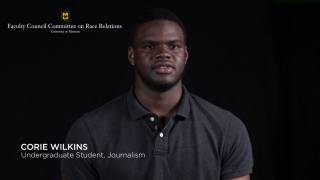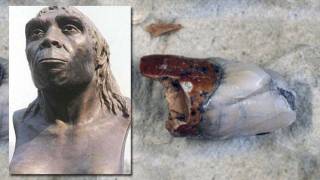Discovery of 6,000-Year-Old Ukraine Temple Offers Glimpse into Ancient Indo-European Daily Life
Source: newobserveronline.com
The unearthing of a 6,000-year-old massive temple complex in central Ukraine has offered a rare glimpse into everyday life of the Indo-European people at about the time of their first major invasions of Europe and the Middle East.
The temple measures 60 by 20 meters (197 by 66 feet) and was made of wood and clay. Originally two stories tall it was surrounded by a galleried courtyard. The temple and settlement were burned down after they were abandoned.
The temple, which was part of a town that once covered an enormous 238 hectares (588 acres) and would have contained more than 1,200 buildings and nearly 50 streets, was first detected by a geophysical survey in 2009 near the modern-day city of Nebelivka, but has only now been subjected to the first intensive archeological excavations.
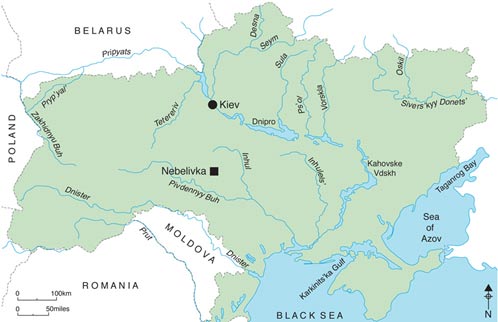
The location of Nebelivka, Kirovograd Domain, Ukraine.
“The high-resolution plot shows the features of a typical mega-site plan structured around two concentric circuits of houses, with mostly empty space between the circuits, almost 50 internal radial streets, a scatter of features outside the outer circuit, enclosed within a boundary ditch, and an apparently ’empty’ core area,” wrote the study authors in the research report published in the journal Antiquity. The temple was made of wood and clay and measured about 60 by 20 meters (196 by 66 feet) in size. It had two levels and was surrounded by a galleried courtyard. The upper level was divided into five rooms, which were once decorated with red paint.
On top of a platform on this level, archaeologists found numerous burnt lamb bones. Archaeologists have speculated that this could be part of an animal sacrifice ritual, or it could also easily have been a communal barbeque area.
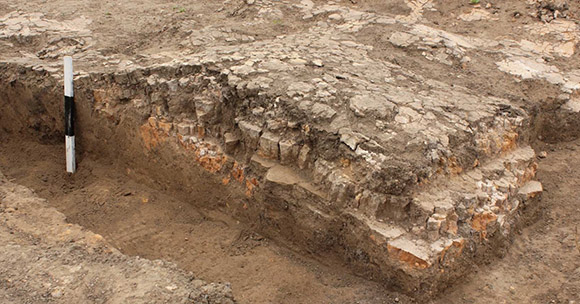
Inside the temple archaeologists found the remains of eight clay platforms that likely served as altars.
The excavated lower levels of the temple contained a large number of animal bones and pottery fragments, and the remains of eight clay platforms, which may have been used as altars.
Significantly, the structure and layout of the temple is similar to other temples of the same era found in ancient Middle East cities, such as those in Anatolia (present-day Turkey) and Mesopotamia (present-day Iraq).
The cultural similarity between the different sites indicates that the same people—Indo-Europeans—were likely responsible for the structures in the various areas, all of which fell to the great Indo-European invasions which followed the flooding of the Black Sea basin around 7,000 years ago.
Other items unearthed at the Ukraine temple site included small rolled gold ornaments, probably used in hair decorations, bone ornaments, and unusual small statues which, at a stretch, are claimed to resemble humans, although this is by no means certain.

These tiny gold pendants, less than an inch in size, were also discovered at the temple, which would have sprawled some 238 hectares (588 acres), according to recent geomagnetic surveys. The pendants may have been worn on someone’s hair.
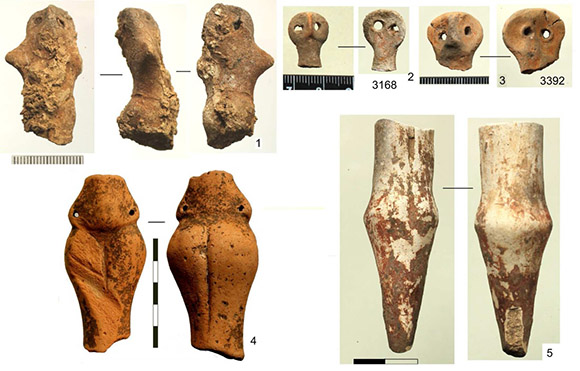
The figures appear similar to those found at other Trypillian sites, once again indicating a commonality of culture and people. The Cucuteni-Trypillian culture is the name given to the Neolithic–Eneolithic archaeological culture (ca. 4800 to 3000 BC) found in Eastern Europe which extends from the Carpathian Mountains to the Dniester and Dnieper regions, centered on modern-day Moldova and covering substantial parts of western Ukraine and northeastern Romania.
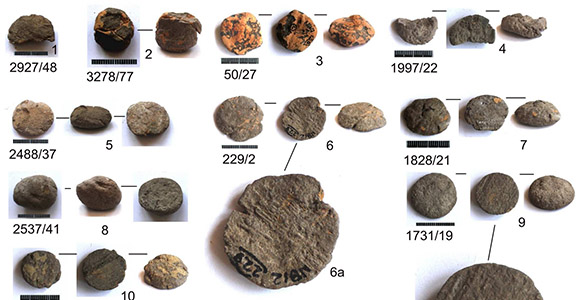
Archaeologists also found a variety of clay tokens inside the temple. Artifacts like these were used for counting and game playing in the ancient world.
The Trypillian culture established cities to accommodate up to 15,000 inhabitants, being some of the largest settlements in Neolithic European history.
The illustrations on decorative items and other artifacts retrieved confirm that the society was matriarchal and that the people living in these settlements farmed the land using ploughs, produced handicrafts, and had a form of religious belief regarding mankind’s origins and the afterlife.
Researchers have noted that there are indications that the inhabitants of these settlements would burn the entire village every 60 to 80 years and then build on top of the ruins.
There is no explanation for this practice, but one location in Romania has as many as thirteen levels of foundations that were built upon. Like other Trypillian cities, the newly-discovered settlement also showed evidence of having being burnt down after it was abandoned.
Source: newobserveronline.com
